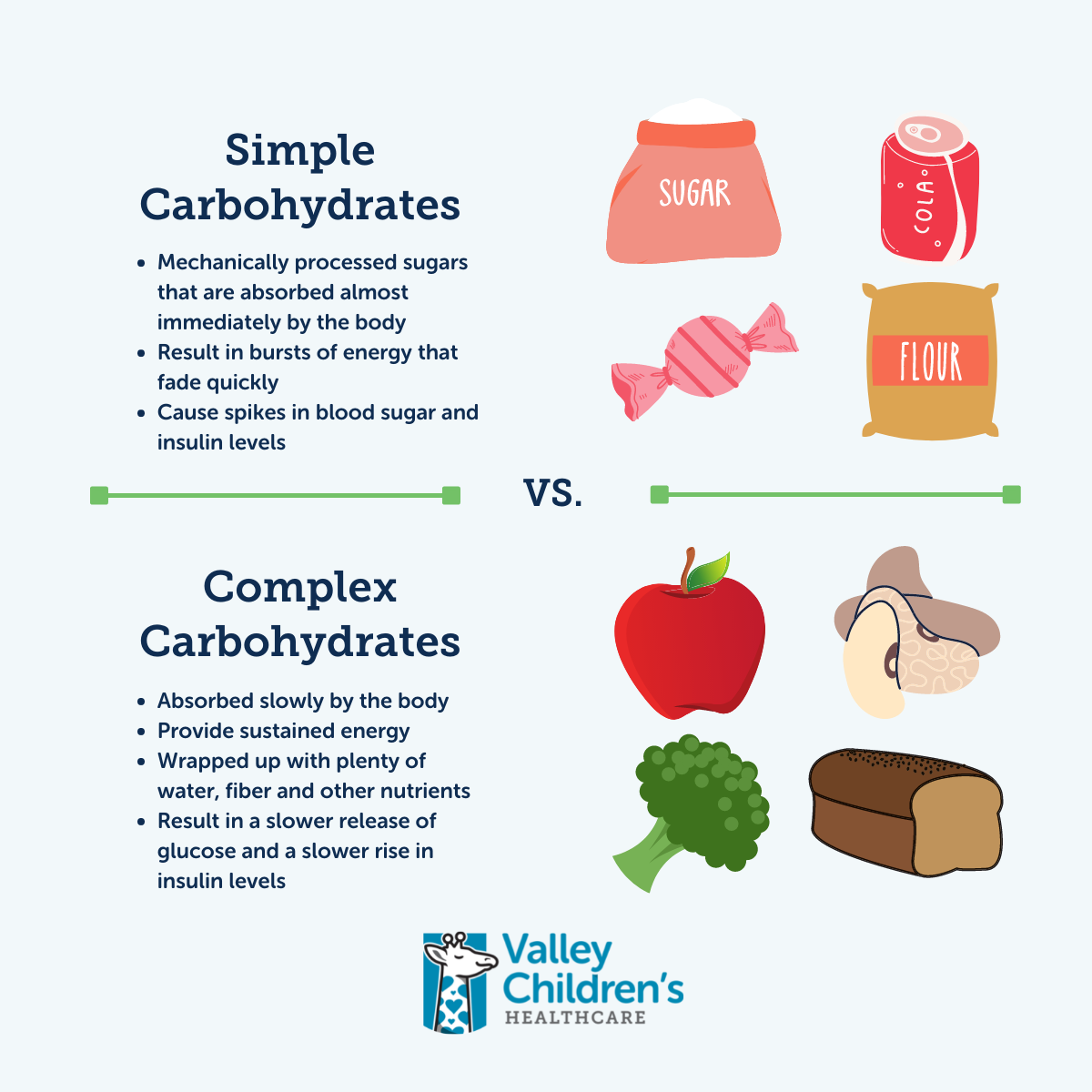Diabetes Education: Carbs Aren’t Cancelled!
November 8, 2021It is a common misconception that people with diabetes are never allowed to eat carbohydrates ever again. This can cause immense guilt and stress, which can increase cravings for sweet, sugary foods. It is true that people with diabetes have a hard time controlling the amount of sugar in their blood and that dietary sugar and carbohydrates are directly linked to blood sugar levels. However, it is important to remember that the amount of carbs consumed is just as important as the type of carbs consumed.
For example, 3 teaspoons full of granulated sugar and one apple contain about the same amount of carbohydrates (about 15 grams of carbohydrates for both). However, the way your body processes the different forms of sugar is wildly different. To illustrate this, let’s take a closer look at two general groups of carbohydrates: simple carbohydrates and complex carbohydrates.
- Corn and sugar cane are processed by machines and chemicals in order to have their natural sugars extracted from the plants to make granulated sugar. The glucose that is already broken down in this form is called a “simple carbohydrate.” The white sugar will be absorbed almost immediately without using any of your body’s energy to break down and process the sugar before it hits the lining of the intestine to be absorbed. This causes a massive spike in your blood sugar levels because all the sugar is being absorbed at once. This spike in blood sugar causes a spike in insulin levels as well in order to either transport the sugar into cells to be used or store the extra glucose as fat. With repeated fast rises in blood sugar levels and rises in insulin levels, the cells in your body eventually stop responding to the insulin hormone and don’t work to transport glucose into cells or store it as fat. The repetition of this pattern over time is what causes Type 2 diabetes mellitus.
-
Consider the apple example. If you eat the apple, you are getting 15 grams of sugar, but that sugar is wrapped up with plenty of water, fiber and other sugar molecules. These large molecules of sugar linked together are called “complex carbohydrates” and are much harder for your intestines to absorb as they take more time to break down. The apple is first digested by your saliva, then your stomach acid and then further broken down as it passes through your digestive system. This causes a slower release of glucose into your blood and a slower rise in your insulin levels. This sugar is not processed before it gets eaten, so it takes the time and energy to get processed by your body and is absorbed at a more natural rate.

Ultimately, even though the amount of sugar is the same in both the white sugar and an apple, the way your body breaks down the carbohydrates is important! Processed foods such as sugar, all-purpose flour, corn syrup and white rice are all sources of simple carbohydrates that will spike your blood sugar and insulin levels. Foods that contain complex carbohydrates are beans, lentils, brown rice, vegetables and fruits. Aiming for “whole” foods or natural, less processed foods will help you control your blood sugar levels more easily.
Every case is different and carbohydrate limits should always be discussed with your doctor. For the majority of people, a ballpark of 40-50 grams of carbohydrates per meal should be the goal. Consider using a food tracking app – MyFitnessPal is a free, comprehensive application that can help you keep track of the amount of carbohydrates.
And remember: don’t fear the carbs!
